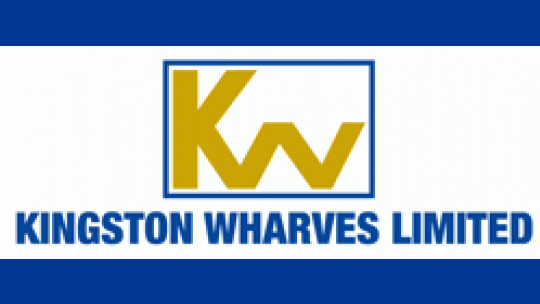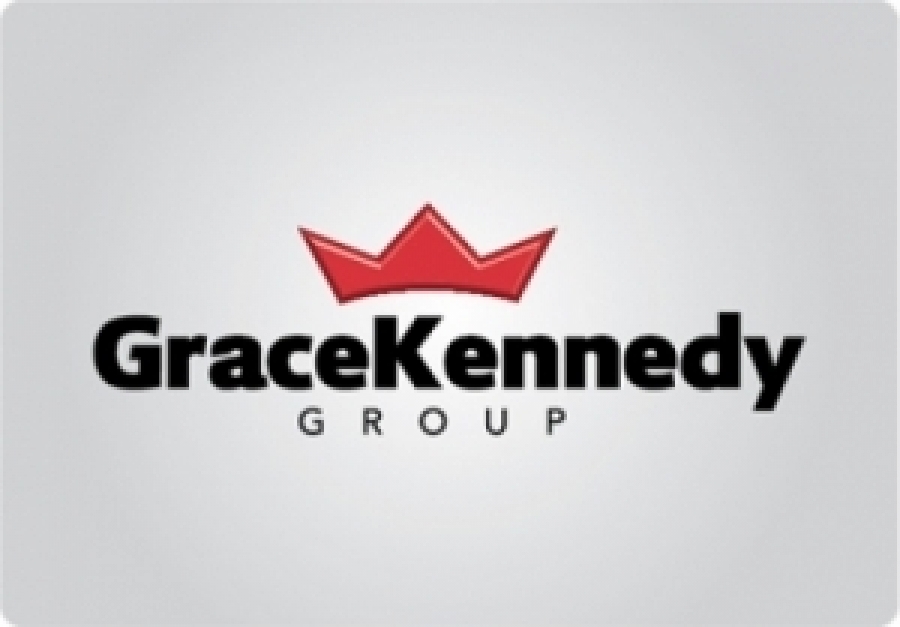Leadership Conversations
How To Define The Standards of Your Services
Published
8 years agoon

Every organization exists in order to serve people. Its goodwill and image are dependent upon the standards of its ser¬vices. Its long-term success or failure is also influenced by the quality of its ser¬vices. Consequently, most organizations strive to provide a good standard of ser¬vice. Some, however, do not clearly define the detailed standards. The result is that they have some vague notions about what they seek to achieve. Some aspects of this subject are set out in this article.
STANDARDS NEEDED FOR EVERY ACTIVITY
Depending on the nature of the opera¬tions, every organization has to provide services in various ways. For every activ¬ity, again, there are several stages of deal¬ing with people. A service is rendered at each stage of every aspect of its work. Thus, a standard of service needs to be established for every activity and its vari¬ous stages or aspects.
The exact details of the aspects or stages and types of services will differ from one organization to another. All organizations, e.g. hotels, retailers, insur¬ance companies, banks, courts, post offices, professional bodies, practicing professionals, and so on must define the standards for each stage of their various services or activities.
DIMENSIONS OF SERVICE
For each aspect of the working of an organization, several matters or dimen¬sions need to be considered with a view to setting the standards of service. These may include the following:
Range of Services Provided
* Do you provide services for all aspects of work or products for which people need your services, e.g. do you repair all that you sell?
* Do you have other unrelated services as a part of your range or on your premises or in the vicinity, e.g. shoe repair, bakery, telephone booth, bank office, stock broker, and so on.
Times when provided
* What are your working hours?
* Do you open on holidays?
* Are these hours convenient for the people?
Location
* Are your locations convenient to people?
* How far do they have to travel to access your service?
Frequency
* What is the frequency of the service (e.g. bus, airline)?
Price
* What is the price of each service?
* How does the price compare with others nationally and internationally?
Time Taken
* How long it takes to provide each service (to answer a telephone call, to check in a customer in a hotel)?
* What are the arrangements to cope with the peak hour rush, e.g. in a bank or a supermarket or a hotel?
Physical Facilities
* How do the facilities look?
* Are they appropriate for the purpose?
* Are the facilities functionally efficient, well organized and clean?
* Do the customers find them adequate and comfortable.
Procedures
* Are the procedures simple?
* Are the forms easy to fill in?
* Is help available to comply with procedures?
* Are there too many stages of dealing with a matter or for approval?
Complaints
* Are there clear procedures to deal with complaints?
* How long does it take to deal with complaints of various types?
Communication
* Are all aspects of services communicated to all concerned?
* How effective and frequent are the communications?
Treatment of People
* How are people greeted and treated?
* Are they treated differently when they come up with complaints?
* Is the treatment the same for all customers – big or small?
* Is your staff courteous?
* Are managers easily accessible to service to people?
Monitoring
* Are systems in place to monitor the various aspects, review them and take appropriate action?
Comparisons
* How do your standards of service compare with those of others – nationally and internationally?
Responsiveness
* Is customer feedback obtained on a continuous basis?
* Are the standards of service continuously updated in response to customer reaction or needs?
* Do you innovate ways to serve people better?
The above are some of the dimen¬sions of service that each organization must consider. The importance or empha¬sis on each dimension will differ accord¬ing to the nature of the organization, oper¬ating environment, resources available, problems, management priorities, etc. In each case, however, there is a need for clear and conscious decisions and communications about the standards of service to all concerned.
STRENGTH DETERMINED BY WEAKEST LINK
The image of service of any organization can be spoilt by one single instance of delay, confusion, lack of courtesy or the like. Hence, it is important to remember that the strength of the service image of any organization is determined by its weakest link. That is why it is vital that standards of service are implemented for every stage of every activity and for all dimensions of service.
People are constantly judging all aspects of service for every activity of an organization. And people are the best judge. Hence, it is necessary to obtain feedback from the people on a continuous basis and make necessary changes in response to customer needs or reactions or at least explain to them the reasons why certain services cannot be rendered.
ADVANTAGES
There are several advantages of clear¬ly defining and implementing appropriate standards of service for every aspect of an organization.
Standards of service provided a basis for:
• Making appropriate policies, organization structure and training schemes (including cross-training and staff reallocation during rush hours).
• Allocating appropriate resources in terms of staff, budget, physical facilities and equipment.
• Selecting employees who share values and standards and are prepared to meet the standards.
• Inculcating the necessary values amongst employees.
• Comparing standards with those of others so as to keep the competitive edge.
• Improving the depth of understanding of the managers about their organization and customers leading to improvement in the quality of management.
• Improving employee efficiency by giving them appropriate training, targets of performance to strive for and constantly improve.
• Motivating employees to improve their performance.
• Conducting proper performance appraisal of employees.
• Rewarding and reprimanding employees.
• Improving the organization’s image.
• Developing an appropriate organization culture.
Thus, standards of service can be very helpful in improving the efficiency of an organization and its image amongst its employees and the public. They can also help in improving national productivity and quality of life of people.
EXAMPLES
Some examples of the various aspects of service in specific types of organizations can clarify the above concepts. Some examples of service for two types of businesses are given below. Similar ones should be developed by every organization.
UTILITIES
These include water, electricity, and telephone companies or corporations. Various dimensions of service, i.e. loca¬tion, time taken, frequency, price, physical facilities, procedures, complaints, cus-tomer responsiveness, comparisons with other utilities (or even other organizations) nationally an internationally in respect of :
o Opening accounts o Concessions to people in distress
o Closing accounts o Treatment of dishonoured cheques
o Getting statements o Information made available to the public
o Reconnections o Telephone calls
o Disconnections o Making refunds
o Copy statements o Parking facilities
o Correction of mistakes o Public access to managers
o Investigation of wrong charges
o Enquiry about any matter
o Replies to letters
o Dealing with complaints
o Bills
o Public education as to the use of the services
o Charges for each service compared with similar services rendered by others.
For these and other areas of activity, each utility company management should consider the various dimensions of service and define its short and long term stan¬dards of service. The standards can pro-, vide a good basis for various other plans and arrangements of the organization. For example, for bills, standards need to be defined as to the frequency of billing, dis¬patch of bills, lead time for payment, deal¬ing with cases where bills are incorrect or are delayed in mail or where they never reach the customers, people in financial distress, locations where payments can be made, days and hours when payments can be made, time taken for payment of bills, action on arrears according to amount due and period for which they are due, and so on. A careful analysis of these will enable management to put in place appropriate facilities, organization, procedures, etc.
RETAILING BUSINESS
The various dimensions of service should be considered in respect of each activity. Some of the activities are:
o Adequacy of range of products and services
o Layout facilitating selection of items
o Cleanliness
o Branches at locations convenient to customers
o Unique items sold
o Help available to find items
o Adequacy of checking out arrangements
o Parking facilities
o Rush hour arrangements
o Days and hours of opening
o Holiday opening hours
o Treatment of damaged or obsolete products
o Prices of products and services
o Discounts on bulk purchases
o Return of items by customers
o Quality of products carried and services rendered
o Ancillary services provided on its premises or in its vicinity
o Frequency, range and the amount of discount on spe¬cials
o Treatment of customers
o After sales services
o Home delivery service
A review of each dimension of service for each of these and other matters can be very helpful in improving the quality of ser¬vices rendered by retailing organizations. This can make a differ¬ence in their degree of success. One of the most successful supermarkets in the world has grown on the basis of quality of service. Guess which one!
The above are just some examples for types of organizations. Similar ones can be developed for all types of organizations including airlines, bus companies, schools, hospitals, hotels, banks, insurance companies, professional organizations, clubs, educational and training organizations, tax offices, cus¬toms, and so on.
CONCLUSION
People expect good quality service from every organization. Only by providing it can an organization project a good image and grow. The service, however, has to cover all the various activities. Further, all dimensions of service have to be covered. It is not enough to cover only some of them. People do not, for example, expect quick service rudely provided at a high price. They do not even expect a low price service provided by arro¬gant staff. They judge the quality of service by its weakest link.
Defining and implementing standards of service can provide several advantages to an organization and the community. Many success stories in the world are the result of good service. Wal Mart (USA) Supermarket is one such example. When some hotels in Hong Kong send Rolls Royces to pick up customers from the airports and then present them with flowers and fruits in the room, they are not just throwing money away. They are building a reputation and attracting business. No wonder they feature high in the world’s ranking of hotels.
Are you now ready to define and implement the standards of service for your organization? How would they compare with others?
Sushil K. Jain FCCA, FCIS, FCMA
You may like
-


Why Some CEOs Resist the Concept of Buy-In
-


Transforming Vision Statements: Choosing the Right Vision for the Right Time
-


Business Strategy Is More Like Playing Golf Than Playing Chess.
-


How Jamaica Producers Group Has Been Organised To Generate Revenues From A Diverse Range Of Business Lines
-


Guess What?……… Its Time To Reinvent Your Business!
-


Strategies for Building Customer Loyalty
Leadership Conversations
Why Some CEOs Resist the Concept of Buy-In
Published
3 days agoon
June 2, 2025
In my years of working with CEOs during strategic planning, I’ve noticed a surprising resistance among some leaders to the concept of buy-in. To these CEOs, seeking input or engagement from employees feels like a sign of weakness. They believe leadership should be about mandating change and that buy-in dilutes their authority. This resistance, while common, often undermines the very success they aim to achieve through strategic planning.
The CEO’s Perspective on Buy-In
For many CEOs, strategic planning aims to create change—often significant, organization-wide change. They understand that change is difficult and frequently met with resistance, particularly from employees accustomed to the status quo. However, their response is often to mandate change, dismissing the need for employee involvement.
This approach stems from the belief that engaging employees in the planning process equates to surrendering control or being held hostage by their resistance. Confident in their vision, these CEOs view buy-in as an unnecessary hurdle, preferring to impose decisions with a “comply or leave” mentality.
The Case for Buy-In
My counterargument is simple yet profound: decisions are only effective if they are supported by those who must implement them. Dr. Robert Zawacki of the University of Colorado articulates this well in his book Transforming the Mature Information Technology Organisation. He argues:
Effective Decisions = The Right Decision X Commitment to the Decision (ED = RD x CD).
This formula highlights that even the best decisions will fail without the commitment of those responsible for implementing them. Commitment doesn’t arise from compulsion—it comes from understanding and shared ownership.
The Power of Participation
Engaging employees in the planning process fosters a deeper understanding and greater alignment. When employees are involved in crafting the parts of the plan that impact their work, they are more likely to accept and embrace the required changes. It aligns with the adage:
“If they create it, they understand it. If they understand it, they commit to it.”
Participation doesn’t mean ceding control; it means building a coalition of committed individuals who will champion the plan’s execution. Buy-in transforms resistance into ownership, turning a potential liability into an asset.
The Bottom Line
CEOs who dismiss buy-in as a weakness fail to see it as a tool of strategic strength. Leadership is not just about creating the right plan—it’s about ensuring that the plan succeeds. Engaging employees is not a concession; it’s a strategy for building commitment, aligning efforts, and achieving lasting change.
Buy-in isn’t just a nice-to-have; it’s the multiplier that turns the right decisions into practical actions.

Ronnie Sutherland
Managing Partner – Strategic Solutions Limited. “I am a strategic planning facilitator ready to guide you through your next strategic planning process.”
Businessuite News24
Finance Minister Highlights Middle Managers’ Key Role in Jamaica’s Economic Growth
“As Minister, I see every day how important strong leadership is to sustaining the progress we’ve made in stabilising our economy, attracting investment and opening new opportunities for our people,” Mrs. Williams said.
Published
2 weeks agoon
May 23, 2025
Minister of Finance and the Public Service, Hon. Fayval Williams, has underscored the pivotal role middle managers play in driving Jamaica’s economic progress.
“As Minister, I see every day how important strong leadership is to sustaining the progress we’ve made in stabilising our economy, attracting investment and opening new opportunities for our people,” Mrs. Williams said.
She declared that middle managers are “the energy that gets things done” as they move their companies along, exhibiting true leadership that shapes the transformation of teams and influences the drive towards national development.
“[True leadership] is the consistent demonstration of values, authenticity and strategic focus that leaves behind a real legacy… one not written in résumés but in lives changed, organisations built, and futures secured. I know that you know that titles may grant authority, but only influence grounded in service, discipline and integrity builds the trust that moves countries like Jamaica ahead,” Mrs. Williams said.

She was addressing stakeholders on day one of the Make Your Mark Consultants (MYMC) two-day Middle Managers’ Leadership Conference at The Jamaica Pegasus hotel in New Kingston on Tuesday (April 29).
Mrs. Williams noted that strategic and decisive leadership is especially critical in navigating current global uncertainties.
“In today’s increasingly dynamic global trade environment, Jamaica’s agility or ability to move swiftly, decisively and strategically is essential for national success; and at the execution level, it is you, it is our middle managers who drive that success.
You’re the ones ensuring that vision becomes reality, solving problems, coaching teams, delivering results and adapting to change with confidence and clarity,” she contended.
The Minister further pointed out, “In a Jamaica that is growing steadily stronger with sound leadership, prudent economic management, historic low unemployment rates, a transparent inflation-targeting regime, real investments in education, infrastructure, and innovation, it is clear that, as a country, we are on the right path.”
Meanwhile, Mrs. Williams lauded MYMC for organising what she described as the premier management conference in Jamaica, noting that the event is critical as Jamaica navigates an increasingly complex global economy.
She noted that this year’s conference theme – ‘A Legacy of Change, Transformation and Execution’ – is apt for the occasion.
“It reminds us that leadership is not about titles, offices, or positions. It’s about action [and] the courage to move when others hesitate. It’s about vision… the ability to see beyond today’s challenges and into tomorrow’s possibilities. Most importantly, it’s about influence – the ability to inspire people to believe in a cause greater than themselves, to push past limits to build institutions that will stand the test of time,” the Minister emphasised.
Mrs. Williams encouraged the participating middle managers to take advantage of the conference by actively engaging in the discussions, learning from the experts, sharpening their skills and strengthening their networks so they can be better and stronger leaders, driving Jamaica’s continued growth and transformation.
By: Donique Weston, JIS
Leadership Conversations
Reinvigorating Global Growth through Productivity Reforms – Nigel Clarke
Published
2 months agoon
March 29, 2025
Distinguished guests, ladies and gentlemen, good morning. I want to thank the China Development Forum for inviting me to speak today. It’s an honor to be here, especially as this marks my first visit to China since joining the IMF.
This is the Year of the Snake—a year of renewal and transformation. A fitting symbol, given the pace of change around us.
Patterns of trade and capital flows are shifting. AI is rapidly advancing. Trade is no longer the engine of global growth it used to be. Divergences across countries are widening. And governments worldwide are shifting their policy priorities.
Meanwhile, global growth is steady but underwhelming. Our five-year ahead growth forecast remains at 3.1 percent—well below the pre-pandemic average of 3.7 percent.
This is largely due to declining productivity growth. Total factor productivity, which measures the ability to create more outputs with the same inputs, has been growing at a slower pace since the 2008-09 global financial crisis.
Reviving medium-term growth
My focus today, therefore, is on how to revive medium-term growth. The path to success lies in pursuing structural reforms to raise productivity.
This applies to all countries. In ageing societies—where the share of the working-age population is shrinking—productivity growth has a vital role to play in maintaining living standards.
It also applies to emerging market and developing economies trying to close the gap with richer countries. To provide better jobs and a higher stand of living, they too need to ignite productivity growth.
Without ambitious steps to enhance productivity, global growth is set to remain far below its historical average.
So, what can we do? Let me focus on two priorities that are especially relevant for Asia.
First, innovation. We know that productivity growth increases with technological advances—advances made possible through investments in research and development, a proxy for innovation effort.
Technology transfer, scientific collaboration and policies that fund basic research can foster the kind of innovation we need for long-term growth. And can have a sizeable impact when combined with closer public-private cooperation. In fact, our research shows that productivity growth in advanced economies can increase by 0.2 percentage point a year with a hybrid policy that boosts public research expenditure by a third and doubles subsidies to private research. Because these are average numbers only, the increase could be even higher in emerging markets and developing countries.
Investments in AI are a case in point. No longer an emerging technology, AI is beginning to revolutionize industries and reshape economies. We estimate that AI could boost global GDP growth between 0.1 and 0.8 percentage points per year in the medium term, depending on how it is adopted.
Second, boosting productivity through better resource allocation. The movement of labor and capital toward more productive firms and industries has long been an important source of overall productivity growth. As workers move from farms to factories, for example, their productivity increases dramatically. So too do their income and living standards, with spillovers to the whole economy.
There are many ways countries can achieve a better allocation of resources, including by implementing policies aimed at increasing the mobility of workers, such as re-skilling programs. And more importantly, by strengthening market forces, which create the necessary incentives, through prices and wages.
Asia provides an example of how such reforms can fuel growth. Over the past few decades, Asia prospered as employment and production moved from agriculture to manufacturing. Now, the region contributes over 60 percent of global growth, and is home to some of the world’s largest, most innovative companies.
Continued success, however, requires continued reforms.
Reforms such as strengthening the private sector. Entrepreneurs drive creativity and innovation, investing in sectors with the highest returns. To create the environment they need to thrive, it’s important that there’s a level playing field between the private sector and state-owned enterprises.
For many Asian countries, including China, reforms also involve expanding the services sector.
Services are a potentially important new source of growth. The sector has already drawn about half of the region’s workers, up from just over a fifth in 1990.
And productivity in some services sectors is high. In fact, our analysis shows that Asia’s labor productivity in financial services is four times higher than in manufacturing, and it’s twice as high in business services.
China
In China, reallocating resources to services would have another important benefit: by creating jobs and increasing incomes, it could help boost consumption. A welcome goal that is also a top priority of the government.
While household consumption as a share of GDP in China has risen, it is still among the lowest compared to OECD countries. A sustained increase in consumption’s share of GDP could lead to continued rapid gains in living standards and provide a welcome lift to global demand. This rebalancing of demand also requires reforms to reduce the need for precautionary savings, especially by middle- and lower-income households.
Overall, our analysis suggests that a comprehensive package of reforms to boost consumption and lift productivity could raise China’s potential growth by about 1 percentage point per year over the medium term. That translates into a level of GDP that is close to 20 percent higher than our baseline by 2040.
The IMF’s role
Through our policy advice, lending and capacity development, the IMF has consistently supported countries in establishing macroeconomic and financial stability as a foundation for growth.
To further help in this endeavor, we have formed a new IMF Advisory Council on Entrepreneurship and Growth. The goal is to get new ideas on how countries can ease regulatory barriers, adapt tax systems to a more business-friendly environment, and incentivize long-term savings, so countries have more to spend on innovation.
In this Year of the Snake, let’s embrace change and focus on reforms and policies to revive growth. This will lead to better prospects for people everywhere.
Thank you.
Remarks by International Monetary Fund Deputy Managing Director Nigel Clarke at the China Development Forum
Beijing, China, March 23, 2025
https://www.imf.org/en/News/Articles/2025/03/23/sp032325-dmdclarke-chinadevtforum?s=03
Environment
Special Report – ESG Transformation in the Caribbean: How Local and Global Companies are Reshaping Corporate Responsibility and Achieving Impact
Published
4 months agoon
January 26, 2025
As Environmental, Social, and Governance (ESG) factors gain traction worldwide, Caribbean companies are increasingly aligning with these principles to meet growing demands for transparency and responsibility. Globally, companies across industries are demonstrating the impact of ESG initiatives on their brand value, stakeholder trust, and even financial performance. In this evolving landscape, the Caribbean region is taking significant strides in its own ESG journey, often inspired by or collaborating with international corporations.
International companies have set benchmarks for comprehensive ESG integration that Caribbean firms are beginning to adopt. For example, Unilever’s “Sustainable Living Plan” and Microsoft’s carbon-negative pledge have illustrated how companies can drive social and environmental impact while strengthening business resilience.
Unilever’s initiatives, for instance, have led to substantial reductions in waste, water use, and greenhouse gas emissions, enhancing both operational efficiencies and brand perception. Likewise, Microsoft’s 2020 commitment to carbon negativity has inspired a wave of tech companies to adopt more robust carbon reduction strategies. Microsoft’s early achievements, including powering data centers with renewable energy, underscore how an ambitious ESG plan can benefit both environmental outcomes and investor confidence.
In the Caribbean, companies like Royal Caribbean Group are also setting ambitious ESG goals. The company’s “Seastainability” report highlights a multifaceted approach to ESG, such as implementing waste-to-energy systems and engaging in biodiversity projects. This not only demonstrates responsible environmental stewardship but also builds stronger connections with local communities, enhancing the brand’s reputation in the tourism industry
Similarly, Republic Bank in Trinidad & Tobago, in its 2024 annual report, outlined comprehensive measures to address climate risks, invest in social programs, and uphold corporate governance standards. This commitment to ESG aligns Republic Bank with global standards, fostering investor appeal and brand strength amid a shift towards responsible investment criteria.
For Caribbean corporate leaders, effective ESG integration requires actionable goals, ongoing monitoring, and transparent communication with stakeholders. To further align with international standards, regional firms can adopt practices like regular ESG impact assessments, clear data-driven metrics, and industry collaborations to address shared challenges.
According to PwC’s 2022 Caribbean Corporate Governance Survey, while over 60% of Caribbean firms acknowledge ESG’s strategic importance, board-level engagement on ESG remains limited, underscoring the need for greater governance oversight and education.
As Caribbean companies refine their ESG strategies, they are positioning themselves as competitive players in an increasingly responsible global economy. By adopting and adapting international best practices, these firms are not only driving positive change but also enhancing their appeal to a growing base of ESG-conscious investors, customers, and communities. This ESG shift is poised to shape the Caribbean’s corporate landscape, reflecting a larger global transformation that values sustainable and ethical growth. BS
Embracing ESG: Sagicor Group Jamaica’s Comprehensive Approach to Sustainability and Community

Sagicor Group Jamaica’s steadfast dedication to Environmental, Social, and Governance (ESG) principles reflects a core philosophy that permeates its vision, mission, and operational practices. Recognizing the role that corporate entities play in shaping a sustainable future, Sagicor has developed robust initiatives across each ESG component to drive value for stakeholders and contribute meaningfully to the Caribbean’s long-term resilience and prosperity.
Environmental Stewardship
Sagicor’s commitment to environmental sustainability is evident in its strategies for energy conservation, sustainable sourcing, and waste management. These initiatives are guided by a focus on reducing the company’s ecological footprint and supporting Jamaica’s transition to a climate-resilient economy.
Water Security Partnership: Recognizing the vulnerability of water resources, Sagicor has partnered with the government to ensure reliable water access across Jamaica. This collaboration aims to make water readily available even during droughts by 2025, underscoring a forward-looking approach to resource security.
Hybridized Work Environment: In line with global trends, Sagicor has adopted a hybrid work model to minimize its physical footprint. This strategy has significantly reduced the need for employee commutes, thus decreasing the company’s carbon emissions. Furthermore, office spaces have been outfitted with energy-efficient lighting, leading to a 75% reduction in energy consumption, which contributes to both environmental conservation and operational cost savings.
Digital Transformation: To further reduce its environmental impact, Sagicor has initiated a comprehensive digital transformation effort, aiming to minimize paper usage across the organization from 2024 to 2027. This shift not only reduces waste but also aligns with global best practices for sustainable business operations.
Eco-Waste Disposal: In collaboration with Recycling Partners of Jamaica, Sagicor Foundation has launched the Sigma Run Go Green Team to collect and recycle plastic waste from its events. This project has successfully recycled over 27,000 bottles, demonstrating Sagicor’s commitment to waste management and environmental responsibility.
Social Responsibility
Sagicor’s social responsibility framework centers on fostering community well-being, promoting social equity, and enhancing access to essential resources. Through targeted programs, the company supports marginalized communities and invests in sectors critical to Jamaica’s social and economic development.
Support for the Farming Community: Sagicor has created specialized financial products, such as agro-processing loans, to support farmers and fisherfolk. This initiative includes affordable healthcare options, reflecting Sagicor’s dedication to meeting the needs of those who often lack access to traditional financial services and healthcare.
Health and Education Investments: Over the past 26 years, Sagicor has invested more than J$600 million in Jamaica’s healthcare infrastructure, contributing to hospitals, children’s health, and disability support services. Additionally, Sagicor’s scholarship programs provide educational support at both tertiary and secondary levels, helping to foster a well-rounded, educated workforce for the nation’s future.
Empowering Women and Marginalized Groups: Sagicor offers entrepreneurial support programs and products designed to empower women and promote social equity. By providing family support leave policies and mentorship programs, the company cultivates a workplace environment that values inclusivity and diversity.
Governance Excellence
Upholding the highest standards of integrity and transparency, Sagicor’s governance framework is geared toward responsible, accountable leadership. This commitment is reinforced through rigorous policies, a focus on data privacy, and proactive cybersecurity measures.
Corporate Governance Structure: Sagicor has implemented a robust governance structure, with committees dedicated to investment, risk management, and IT oversight. This framework ensures vigilance across all operational areas, positioning the company to adapt to evolving risks and challenges. Furthermore, Sagicor’s property services are ISO certified, a mark of quality assurance and commitment to excellence.
Data Privacy and Cybersecurity: Data privacy is a priority for Sagicor, which has established a comprehensive Data Privacy Programme. This includes appointing a dedicated Data Protection Officer and adopting a “Privacy-by-Design” approach for product development. In addition, Sagicor’s cybersecurity framework adheres to global best practices, supported by board-approved policies and active threat monitoring.
Regulatory Monitoring and ESG Framework Development: Sagicor stays at the forefront of ESG regulatory changes, actively monitoring emerging standards and aligning its practices accordingly. The company is currently building out a dedicated ESG framework, which will further integrate sustainability into its corporate strategy, ensuring long-term alignment with global ESG priorities.
Conclusion
Sagicor Group Jamaica’s multifaceted ESG approach exemplifies a commitment to responsible business that goes beyond profit. By addressing environmental impacts, fostering social well-being, and adhering to ethical governance practices, Sagicor not only contributes to the Caribbean’s sustainable development but also strengthens its position as a leader in the region’s financial and social landscape. The company’s dedication to ESG is an inspiring model for other organizations seeking to integrate these essential principles into their operations and support a more sustainable, inclusive future for the Caribbean.
Supporting Sustainable Development Goals: ANSA McAL Group’s Progress in Sustainability

ANSA McAL Group, one of the Caribbean’s leading conglomerates, has consistently advanced its commitment to sustainable development. Since 2015, ANSA McAL has actively invested in green energy, circular economy initiatives, and equal opportunity policies, supporting several United Nations Sustainable Development Goals (SDGs). In recent years, its efforts have amplified, with initiatives across renewable energy, waste reduction, workforce safety, cybersecurity, and ESG integration.
Here’s a closer look at some key projects and the SDGs they advance.
Investing in Green Energy
Since 2015, ANSA McAL has led renewable energy initiatives, generating over 121,000 MWh of green energy in 2023. This aligns directly with SDG 7: Affordable and Clean Energy and SDG 13: Climate Action. The recent signing of a Memorandum of Understanding (MOU) with Kenesjay Green Limited at COP 28 reinforces the Group’s dedication to advancing private-sector green energy projects across the Caribbean, which will help reduce regional carbon footprints and mitigate climate change.
Circular Economy
ANSA McAL’s circular economy approach addresses SDG 12: Responsible Consumption and Production. ANSA Packaging’s impressive 91% increase in glass collection for recycling in Trinidad and Tobago exemplifies this commitment, as does the Beverage Sector’s redirection of over 2.4 million kilograms of spent malt grains from CARIB Breweries. By providing these materials to farmers as low-cost animal feed, ANSA McAL reduces landfill waste and supports local agricultural economies.
Caribbean Natural Capital Hub
In collaboration with The Cropper Foundation, ANSA McAL’s financial entities, ANSA Merchant Bank and ANSA Bank, launched the Caribbean Natural Capital Hub SME Grant Challenge in Trinidad and Tobago. This initiative fosters corporate awareness on environmental responsibility, supporting SDG 15: Life on Land. By introducing a technical working group to explore nature-based reporting, ANSA McAL contributes to preserving and enhancing biodiversity.
Safe Working Environment
Prioritizing a safe workplace, ANSA McAL has reduced workplace accidents by 38% since implementing Safe Systems of Work training. Over 2,400 employees completed this program, aligning the Group with SDG 8: Decent Work and Economic Growth by promoting safe, productive employment.
Enhanced Cybersecurity
ANSA McAL’s investment in cybersecurity, including a new Security Operations Centre (SOC) with Security Orchestration, Automation, and Response (SOAR) capabilities, underscores the Group’s commitment to SDG 9: Industry, Innovation, and Infrastructure. The Group’s 24/7 threat detection and incident response services exemplify how technology can strengthen resilience in an increasingly digital business environment.
Equal Opportunity and Culture Transformation
In addressing SDG 5: Gender Equality, ANSA McAL has assessed gender equity in remuneration across five major job levels, with pay differences favoring women in some cases. The Group’s culture transformation initiatives also aim to create an enriching, equitable work environment. By promoting diversity and inclusivity, ANSA McAL supports work-life balance and a culture of growth.
ESG Framework and Enterprise Risk Management
In 2023, ANSA McAL established a Group-wide Sustainability Committee, with representatives from all sectors, alongside the launch of its ESG framework. This framework, designed to integrate sustainability into corporate strategy, supports SDG 16: Peace, Justice, and Strong Institutions by fostering governance that is transparent and ethical. Furthermore, the ANSA McAL Playbook & Risk Standard defines the Group’s minimum risk management requirements, emphasizing safety, governance, and long-term impact.
As ANSA McAL builds on these efforts, the Group sets a benchmark for corporate responsibility in the Caribbean, aligning its strategic direction with international best practices and the UN Sustainable Development Goals.
Kingston Wharves Limited’s 2023 ESG Initiatives: Advancing Sustainability, Community Well-Being, and Environmental Protection

In 2023, Kingston Wharves Limited (KWL) reinforced its dedication to Environmental, Social, and Governance (ESG) practices by aligning with eight key United Nations Sustainable Development Goals (SDGs). As a crucial logistics hub in Jamaica, KWL uses its position and resources to create a sustainable impact, not only within its operations but also across the Newport West Port Community and Jamaica as a whole.
Commitment to Quality Education and Community Engagement
KWL is committed to empowering local communities through investments in Quality Education. The company supports early childhood education, youth development, and sports, recognizing that strong educational foundations contribute to long-term community resilience. By funding and participating in educational initiatives, KWL helps foster future leaders, workforce talent, and engaged citizens who can drive regional growth.
Promoting Decent Work and Economic Growth
One of KWL’s core beliefs is that every employee’s life should be positively impacted through their employment. The company’s Decent Work and Economic Growth strategy aims to nurture personal, professional, and community development by providing resources for self-sustaining growth. This commitment includes competitive wages, career advancement opportunities, and a supportive work environment that reflects the SDG spirit of “teaching a man to fish.”
Fostering Sustainable Cities and Communities
Recognizing the importance of safe and sustainable urban environments, KWL is dedicated to building Sustainable Cities and Communities. KWL actively promotes civic pride and environmental responsibility within the Newport West area, organizing and sponsoring clean-up and recycling initiatives. This commitment extends beyond its facilities to positively affect the surrounding areas, creating a healthy, dignified, and welcoming space for both residents and visitors.
Environmental Conservation: Life Below Water and Life on Land
Protecting marine and terrestrial ecosystems is central to KWL’s ESG mission. Through programs aligned with Life Below Water and Life on Land, the company has implemented measures to limit environmental impact. KWL spearheads plastic waste reduction, coastal clean-ups, and recycling projects to safeguard marine biodiversity. On land, KWL’s responsible sourcing practices and biodiversity initiatives strive to balance human activity with the preservation of natural habitats.
Gender Equality and Community Empowerment
KWL champions Gender Equality within its organization, providing leadership opportunities and supporting initiatives that empower all employees, regardless of gender. This inclusive approach strengthens the company’s organizational culture, fosters innovation, and demonstrates the impact of gender equity in driving sustainable corporate success.
Industry, Innovation, and Infrastructure Investments
KWL’s investments in Industry, Innovation, and Infrastructure reflect its commitment to long-term economic and technological advancement. The company continually invests in state-of-the-art technology and infrastructure to support its sustainability objectives and strengthen its operations. This focus on innovation includes integrating environmental and social governance practices into all business functions, reinforcing KWL’s role as a regional leader in responsible business practices.
Climate Action and Tracking Carbon Footprint
KWL has intensified its Climate Action initiatives, measuring and tracking greenhouse gas emissions from electricity and fuel use to reduce its carbon footprint. Through these ongoing assessments, KWL can implement data-driven strategies that contribute to climate change mitigation. All new construction plans incorporate fuel, energy, and water efficiency mechanisms, aligning with global standards for sustainable development.
Waste Management and Recycling
In 2023, KWL made significant strides in recycling and waste management, emphasizing the importance of Eco-Waste Disposal. The company introduced plastic bottle recycling within its daily operations, strategically placing recycling bins throughout its facilities. By collaborating with Recycling Partners of Jamaica, KWL organized two community clean-ups focused on reducing plastic waste and educated employees about the environmental impact of waste disposal. A plastic bottle recycling competition further engaged employees and vendors, reinforcing KWL’s commitment to environmental stewardship within the port community.
Conclusion
Kingston Wharves Limited’s 2023 ESG activities highlight a comprehensive and proactive approach to sustainable business practices. Through targeted initiatives in education, environmental conservation, community well-being, and infrastructure, KWL exemplifies a responsible corporate entity that seeks to contribute to both local and global sustainability goals. As KWL continues to embed the UN SDGs into its business operations, it sets a standard for Caribbean enterprises committed to achieving a sustainable and resilient future for the region.
GraceKennedy: Pioneering Environmental, Social, and Governance (ESG) for Sustainable Growth

GraceKennedy (GK) is undergoing a transformative integration of Environmental, Social, and Governance (ESG) principles into its operations. This comprehensive approach, rooted in the company’s corporate governance values, underscores GK’s commitment to sustainable growth and resilience within the communities it serves. Following the release of its first ESG statement in 2022 and an extensive ESG materiality assessment in 2023, GK established seven primary ESG goals. These goals are set to guide GK’s trajectory toward a sustainable future while meeting the expectations of stakeholders.
Integrity and Governance: Strengthening Trust and Transparency
Upholding the highest standards of integrity remains at the core of GK’s values. By December 2024, GK aims to establish a dedicated ESG hub on its website, where stakeholders can access the company’s ESG policies and reports. In addition to broadening its stakeholder engagement program, GK plans to publish a comprehensive Environmental, Social, and Governance Policy by 2025, creating a transparent platform for dialogue and ongoing feedback integration.
Employee Welfare and Diversity: Building a Respectful Workplace
As part of its commitment to a safe and inclusive work environment, GK strives to be an employer of choice. Key goals for December 2025 include launching a comprehensive Health, Safety, and Wellness Policy and implementing diversity training across all GK divisions. With a focus on enhancing employee engagement, GK’s workplace initiatives aim to create an atmosphere where each team member feels valued for their contributions.
Responsible Products and Services: Bolstering Consumer Confidence
GK has made responsibility and data privacy cornerstones of its business practices. The company plans to launch a Group Data Protection Policy by the end of 2023 and enhance cybersecurity awareness by 2026. Additionally, GK’s financial literacy program, GK Money Sense, is evolving into a broad-based training initiative designed to help customers make informed financial choices by December 2025. Aiming to support healthier lifestyles, GK has also committed to an accelerated product development strategy that reduces fat, salt, and sugar content across its portfolio by the same date.
Environmental Stewardship: Minimizing Ecological Impact
Reducing environmental impact is central to GK’s ESG agenda. By December 2024, GK plans to implement strategies to reduce virgin plastic use in its products and, by 2025, launch a comprehensive sustainability strategy for all GK entities. Expanding its greenhouse gas (GHG) measurement and tracking efforts, GK intends to implement GHG reduction strategies across all operations by 2026, underscoring the company’s commitment to climate resilience and sustainable resource management.
Community Engagement: Supporting Vibrant and Inclusive Communities
Improving community well-being is a top priority for GK. By 2024, GK will introduce an online CSR portal within its ESG hub, tracking community-focused activities across the organization. GK has also set ambitious targets for volunteer hours and investment, aiming for 4,000 hours and J$370 million annually in community development by 2030. These initiatives focus on expanding access to education, promoting healthy lifestyles, and fostering environmentally sustainable practices, reinforcing GK’s role as a pillar of community support and development.
The “We Care” Report: Mapping GK’s ESG Journey
In September 2023, GK published its inaugural ESG “We Care” report, which documents the company’s sustainability journey and outlines its ESG goals and targets. This report represents a milestone in GK’s commitment to ESG, providing a transparent account of its progress, priorities, and vision for the future.
Through these initiatives, GraceKennedy is not only enhancing corporate sustainability but also contributing to a resilient future for its stakeholders and the wider Caribbean community. GK’s commitment to ESG principles marks a forward-thinking approach that sets the stage for a legacy of sustainable growth and community empowerment.
Businessuite News24
Why Caribbean Business Leaders Should Be Concerned About Declining Birth Rates and Population Shifts
Published
4 months agoon
January 26, 2025
Caribbean countries are experiencing a decline in birth rates, a trend posing significant challenges for the region’s future workforce, economic vitality, and market demand.
This population shift is driven by several factors: lower birth rates, single-parent households, aging populations, migration, and evolving family structures. For Caribbean business leaders, these trends indicate a shrinking pool of young workers, potential reductions in market size, and shifts in consumer demand—each with implications for long-term strategic planning.
One concern for leaders is workforce sustainability.
With an aging population and declining youth demographics, the region faces a shortage of skilled labour. For instance, in St. Vincent and the Grenadines, the working-age population (25-64) is expected to decrease relative to retirees, signaling potential labour shortages that may hinder economic productivity and increase costs related to recruitment and retention. This demographic shift will also stress social security and pension systems, as fewer working individuals will be available to support a growing number of retirees.
Another key impact is the changing consumer landscape.
As birth rates decline, spending on youth-oriented goods, like children’s apparel and educational services, may decrease. On the other hand, an older demographic increases demand for healthcare, elder services, and financial planning products.
Companies in retail, healthcare, and financial services should consider how to pivot their offerings to cater to an aging population. This shift in demand highlights a growing need for business leaders to proactively adapt their services and marketing strategies to reflect demographic realities which also exacerbates population challenges in the Caribbean.
Skilled professionals often seek better opportunities abroad, creating a “brain drain” that impacts local innovation, healthcare, and education. This emigration trend not only reduces the talent pool but also places added pressure on businesses to offer competitive salaries and benefits to retain top talent.
While remittances from abroad do support local economies, these inflows are not sufficient to offset the lost human capital and may contribute to a reliance on external sources of economic stability.
Mitigation Strategies
To mitigate the impacts of a declining population and labour pool, Caribbean business leaders can take several steps:
Invest in Workforce Automation: Adopting technology and AI can help offset labour shortages and enhance efficiency.
Attract and Retain Talent: Offering competitive wages, flexible work arrangements, and pathways for career growth can help retain existing talent and attract skilled professionals who might otherwise seek opportunities abroad.
Develop Age-Responsive Products: As consumer needs shift with an aging population, tailoring products and services toward elder demographics—such as health, wellness, and retirement services—can help maintain demand.
Expand Markets: Companies can look beyond the Caribbean to more populous markets with younger demographics, like parts of Latin America, to diversify revenue.
Engage in Policy Advocacy: Collaborating with governments to support youth employment initiatives, incentivize family growth, and create skilled migration programs can address demographic challenges systemically.
Enhance Skills Training: Invest in upskilling programs to enhance productivity and adapt the existing workforce to high-demand roles, filling gaps left by emigration.
By anticipating these demographic shifts, leaders can future-proof their businesses, ensuring resilience in a changing Caribbean economy.

Why Some CEOs Resist the Concept of Buy-In

The Strategic Importance of Investor Communication and Recommendations for Caribbean Listed Companies

Spur Tree Spices Projects Growth from Product Innovation, Domestic Sales, and E-Commerce Scaling

Businessuite 2023 Top 100 Caribbean Companies – US$ Revenue

Jeffrey Hall Is Set To Be One Of The Most Powerful Men In Corporate Jamaica And The Caribbean. So, Who Is He?
Which Company Has The More Sustainable Business Model….Edufocal or ICREATE and Why?

Trending
-

 Businessuite Markets1 week ago
Businessuite Markets1 week agoThe Strategic Importance of Investor Communication and Recommendations for Caribbean Listed Companies
-

 Businessuite News242 weeks ago
Businessuite News242 weeks agoSagicor Group Jamaica Announces Organisational Changes to Support Business Growth
-

 Businessuite Markets2 weeks ago
Businessuite Markets2 weeks agoSeprod’s Strong 31.9% Revenue Growth Tempered by Higher Finance Costs from Regional Expansion
-

 Logistics & Transportation2 weeks ago
Logistics & Transportation2 weeks agoUnilever Caribbean’s Strategic Shift: Embracing Outsourced Logistics for Enhanced Efficiency
-

 Leadership Conversations3 days ago
Leadership Conversations3 days agoWhy Some CEOs Resist the Concept of Buy-In
-

 Businessuite Markets2 weeks ago
Businessuite Markets2 weeks agoKingston Properties Reports Robust Q1 Growth in Core Revenues and Net Income
-

 Businessuite Markets2 weeks ago
Businessuite Markets2 weeks agoUnilever Caribbean’s New Distribution Model Marks Key Strategic Recalibration Amid Market Challenges
-

 Businessuite News24 International3 weeks ago
Businessuite News24 International3 weeks agoUber Introduces Route Share: A New Chapter in Affordable, Shared Mobility


